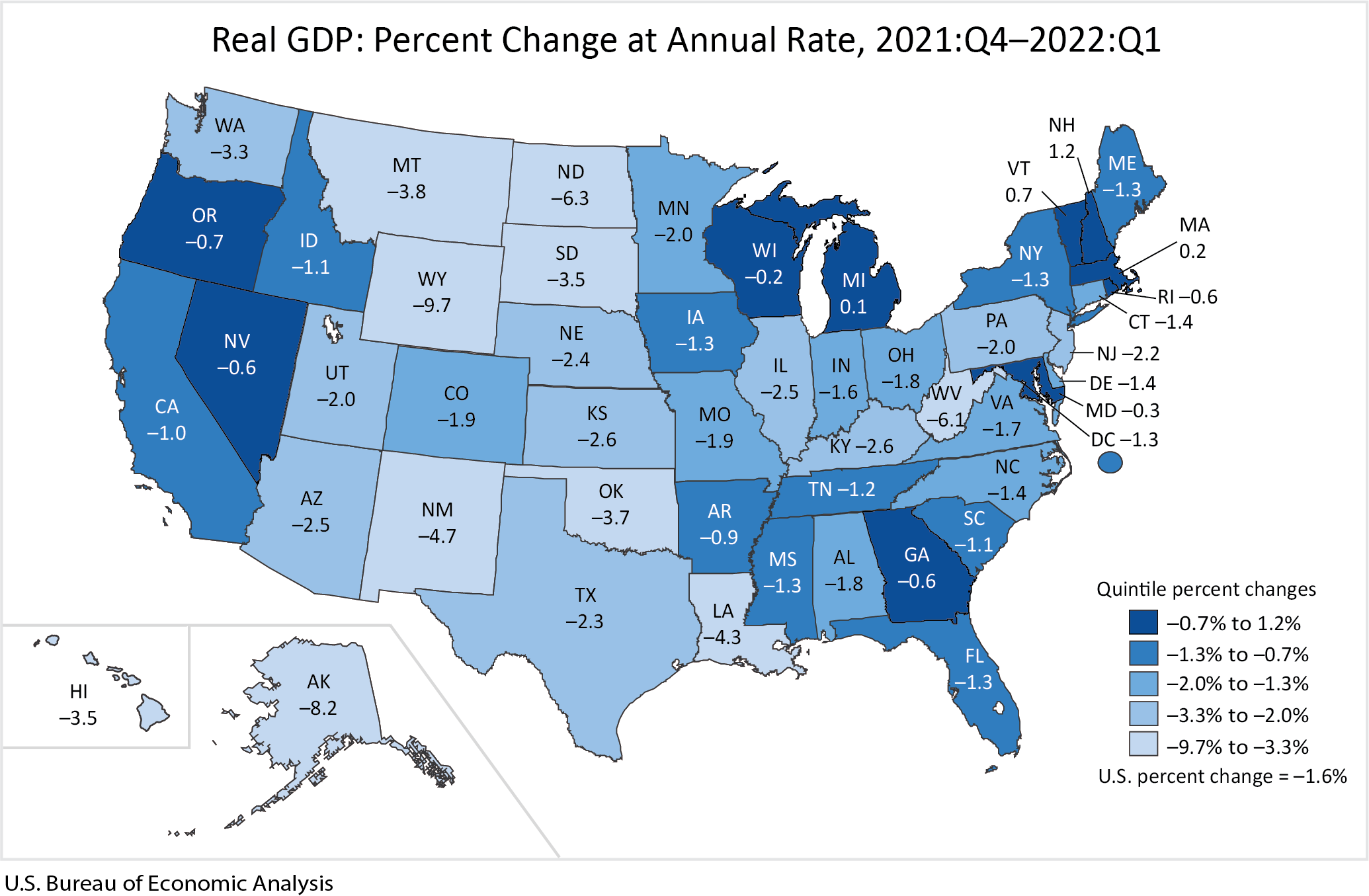News Release
Gross Domestic Product by State, 1st Quarter 2022
Real gross domestic product (GDP) decreased in 46 states and the District of Columbia in the first quarter of 2022, as real GDP for the nation decreased at an annual rate of 1.6 percent, according to statistics released today by the U.S. Bureau of Economic Analysis (BEA). The percent change in real GDP in the first quarter ranged from 1.2 percent in New Hampshire to –9.7 percent in Wyoming (table 1).
In the first quarter, an increase in COVID–19 cases related to the Omicron variant resulted in continued restrictions and disruptions in the operations of establishments in some parts of the country. Government assistance payments in the form of forgivable loans to businesses, grants to state and local governments, and social benefits to households all decreased as provisions of several federal programs expired or tapered off. The full economic effects of the COVID–19 pandemic cannot be quantified in the GDP by state estimates for the first quarter, because the impacts are generally embedded in source data and cannot be separately identified. For more information, see “Federal Recovery Programs and BEA Statistics.”
Real GDP decreased in 8 of the 21 industry groups for which BEA prepares quarterly state estimates. Nondurable goods manufacturing, retail trade, and finance and insurance decreased 17.0, 10.2, and 7.1 percent, respectively, for the nation and were the leading contributors to the decrease in real GDP (GDP release table 12). These three industries contributed decreases in all 50 states and the District of Columbia (table 2).
Other highlights
- Mining, quarrying, and oil and gas extraction contributed decreases in 49 states. This industry was the leading contributor to the decreases in 10 states, including Wyoming, Alaska, North Dakota, West Virginia, and New Mexico—the 5 states with the largest decreases in real GDP.
- Government and government enterprises was the leading contributor to the increases in New Hampshire and Massachusetts—the states with the largest and third-largest increases in real GDP, respectively.
- Agriculture, forestry, fishing, and hunting was the leading contributor to the increase in Vermont—the state with the second-largest increase.
- Utilities was the leading contributor to the increase in Michigan—the only other state with an increase.
Revised annual GDP by state estimates for 2017 to 2021 will be released on September 30, 2022. In addition, revised estimates for the first quarter of 2017 through the first quarter of 2022 and preliminary estimates for the second quarter of 2022 will also be released. In November 2022, the Survey of Current Business will publish an article describing the results.
Starting on September 30, 2022, BEA will begin to regularly publish quarterly statistics for state GDP and state personal income together in a single news release, providing a fuller picture of the economies of all states and the District of Columbia. The combined news release will replace the publication of two separate releases issued on different days.
Next release: September 30, 2022, at 10:00 a.m.
Gross Domestic Product and Personal Income by State, 2nd Quarter 2022 and Annual Update 2021
